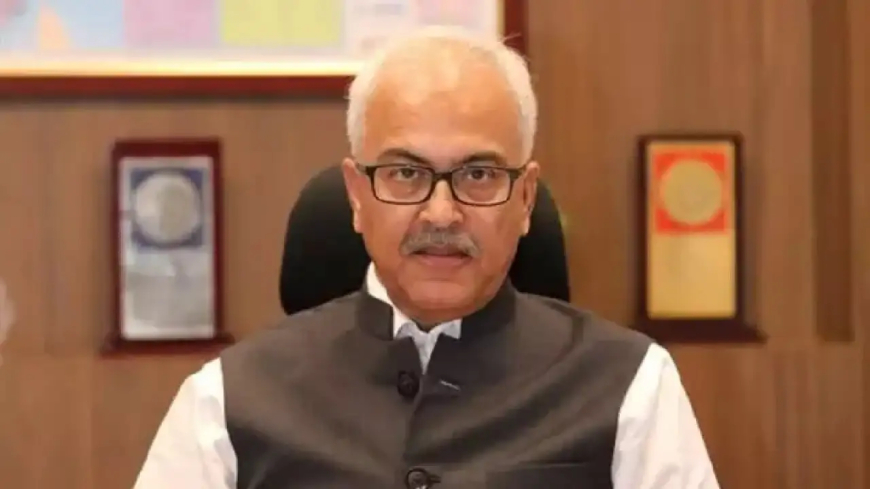Manipur Governor’s Helicopter Travel Sparks Controversy Amid Intensifying Protests
As protests escalate across Manipur, Governor Anusuiya Uikey’s use of a helicopter instead of road travel has drawn criticism. Here's what it reveals about the region’s deepening unrest and public perception of leadership.

Manipur Governor Uses Helicopter Amid Escalating Protests: Public Anger Deepens Over Perceived Disconnect
The political temperature in Manipur continues to rise, and with it, public scrutiny. Governor Anusuiya Uikey’s recent decision to travel by helicopter from the Raj Bhavan in Imphal to Churachandpur—a district at the heart of the ongoing conflict—has stirred a storm of controversy.
While the move was reportedly made due to security concerns following weeks of ethnic clashes and widespread demonstrations, many citizens and civil society groups have criticized the choice as symbolic of a growing disconnect between state leadership and ground realities.
According to a detailed report in The Indian Express, this was the third time in the last month that the Governor avoided road travel to volatile areas despite assurances of protection from local police and CRPF.
Why Manipur Is Boiling: A Recap of the Crisis
Manipur has been on edge since May 2023, when ethnic violence broke out between the Meitei and Kuki-Zo communities, leading to the deaths of over 200 people and the displacement of thousands. The situation remains volatile, with internet shutdowns, curfews, and ongoing house burnings still reported from various districts.
The breakdown of trust in the government, both at the state and central levels, is evident. Protests led by Meira Paibi women’s groups, student unions, and displaced tribal associations have accused political leaders of abandoning the people.
For comprehensive background on the conflict, refer to Scroll.in’s special coverage on Manipur violence.
The Helicopter Ride That Fueled Outrage
On May 25, Governor Uikey was scheduled to meet tribal leaders and victims in relief camps in Churachandpur. But instead of driving through National Highway 102B, she flew in via an IAF-deployed chopper, reportedly avoiding protesters stationed en route.
Critics argue that this decision:
-
Highlights lack of engagement with those protesting on the roads
-
Undermines the role of civil dialogue and reconciliation
-
Sends a message that state leaders fear their own citizens
Some local editorial columns have drawn a stark contrast between the Governor’s aerial visit and the ground presence of protest leaders, religious figures, and NGOs who have risked their safety to negotiate peace.
In an interview with The Wire, a protest organizer in Bishnupur said: “If she cannot even meet us face to face, how do we believe she is listening to us?”
Government’s Defense: Security Concerns Cited
The Governor’s office has defended the helicopter usage citing “intelligence alerts” about potential threats and road blockades. Officials claimed that any delay or security lapse could have risked worsening tensions further.
However, opposition leaders and human rights groups see this explanation as administrative overreach. Several have demanded transparency in how such decisions are being made and whether dialogue is genuinely being prioritized over optics.
According to The Hindu, the Union Home Ministry was kept informed, and the decision had their tacit approval.
Political Fallout and Public Sentiment
The incident has had immediate political repercussions. Leaders from the Congress party and Indigenous Tribal Leaders’ Forum (ITLF) have condemned the act, calling it “symbolic of how far removed governance is from the suffering masses.”
On social media, hashtags like #GroundZeroLeadership and #WalkWithUs trended locally, urging politicians to meet protestors on foot, listen directly, and not hide behind bureaucratic shields.
For real-time updates on Manipur’s public sentiment, follow EastMojo’s North East Conflict Tracker.
A Wider Question: Leadership in Times of Crisis
At its core, the controversy raises a vital question about leadership ethics during internal conflict. Should those in power take personal risks to demonstrate solidarity, or prioritize safety to ensure continuity of governance?
Political observers say it’s not just about a helicopter—it’s about perception, presence, and public trust. In a crisis as sensitive and drawn-out as Manipur's, symbolic gestures often carry the weight of policy decisions.
A noted analyst at the Observer Research Foundation writes, “In conflict zones, absence can be louder than words. A leader’s physical presence matters—it signals commitment.”
Conclusion: A Divided State Seeks Healing, Not Helicopters
Governor Uikey’s helicopter visit has inadvertently deepened the sense of alienation in a region already grappling with identity, security, and justice. While logistical safety is non-negotiable for high-ranking officials, balancing it with genuine grassroots engagement is what makes leadership transformative.
In Manipur today, what people demand isn’t just policy—they demand presence, listening, and a commitment to healing wounds that helicopters cannot bypass.



















































